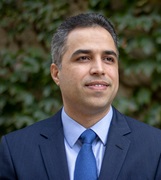Research
Contact
Communications Specialist
Faculty of Engineering
Spencer Engineering Building
Room 2072
Western University
Tel: 519-661-2111 ext. 87015
Email: engineeringcomms@uwo.ca
The Engineer's Impact - Saber Moradi
Your inside look at faculty’s research and its effect on society
In this new Q&A series, we’ll feature Western Engineering faculty members to gain a succinct overview of their research, understand its impact on society, and discover intriguing little-known facts.
Meet Civil and Environmental Engineering Associate Professor Saber Moradi.
 Can you describe your research?
Can you describe your research?
Our research focuses on making buildings and bridges safer and more resilient in the event of earthquakes or other extreme events. Specifically, we develop and test new ways of designing structures using advanced materials and innovative structural systems. The goal is to minimize damage during earthquakes, ensuring that buildings not only protect lives but also remain usable after the event. This approach also helps communities recover faster and reduces the overall societal, environmental, and economic impacts of natural hazards.
How does your research impact society in everyday life?
Our work directly improves the safety, resilience, and sustainability of buildings and bridges. By researching and implementing advanced earthquake-resilient designs, we significantly reduce the risks of structural damage, injuries, repair costs, and lengthy disruptions after earthquakes. For example, self-centering structural systems allow buildings to quickly return to their original position after strong shaking, making it possible for people to safely re-enter and use these structures immediately or shortly after an earthquake.
What’s an interesting, little-known fact related to your research?
One fascinating aspect of our research is our use of novel materials known as Shape Memory Alloys (SMAs). These smart alloys have the remarkable ability to "remember" their original shape even after being bent or stretched. When incorporated into structural systems, they help building or bridge structures recover and return to their original positions after an earthquake. Another intriguing approach we explore is designing buildings that intentionally rock at their foundations during earthquakes. This rocking motion significantly reduces damage, allowing structures to safely return to their upright positions after shaking stops, with minimal repairs needed.

